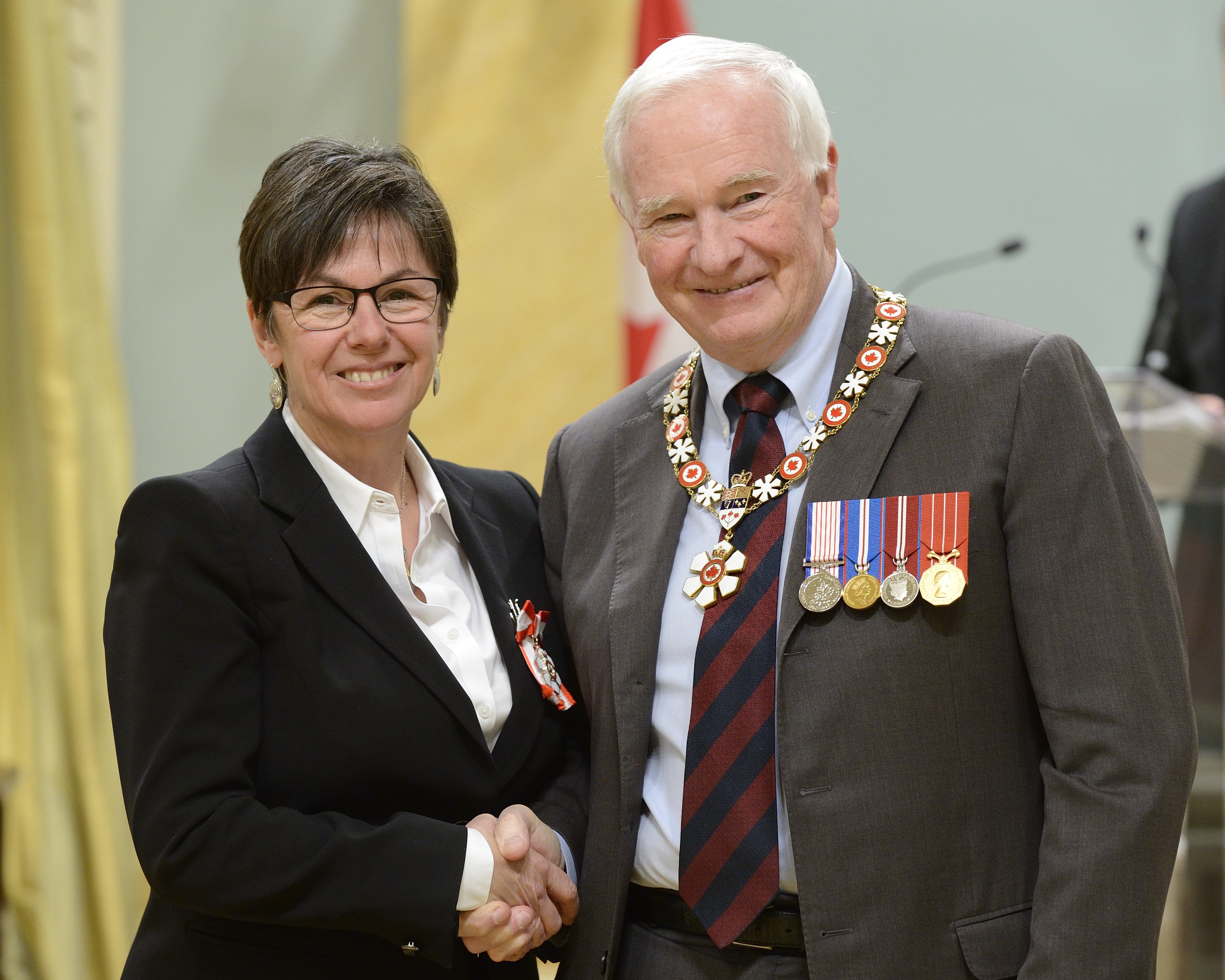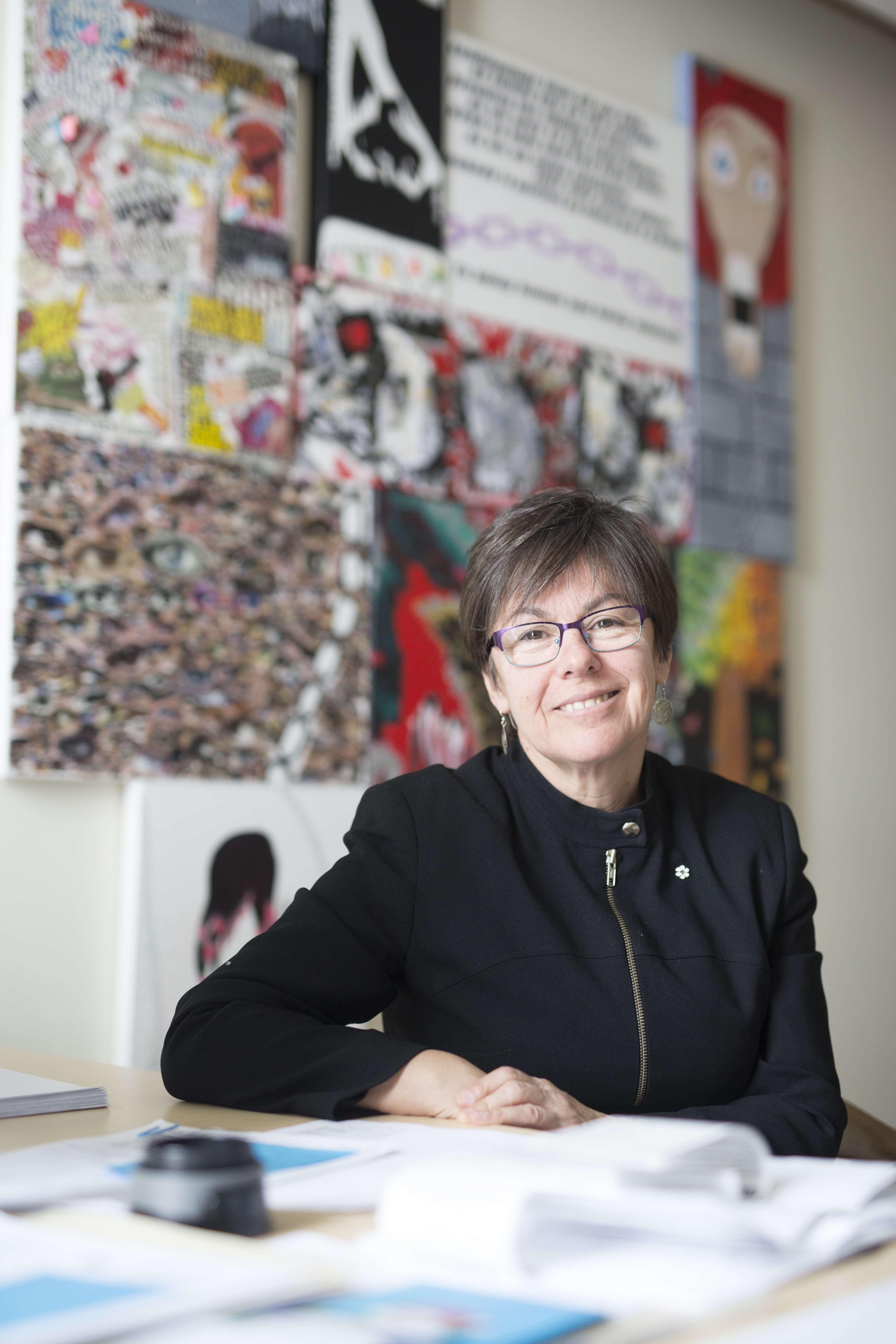
The Ariel F. Sallows Chair in Human Rights was the first endowed chair in human rights to be established at a law school in Canada. It resulted from an estate gift agreement with the late Ariel F. Sallows, QC, in 1979.
But the inaugural one-year appointment is just one of many firsts for Pate, an esteemed advocate for social justice. To date, she has developed and taught human rights courses at three institutions—the University of Ottawa, Dalhousie University and the University of Saskatchewan—and has seen graduate law students who took her courses obtain social justice work.
In 2006, Pate joined the University of Ottawa Faculty of Law as the inaugural Law Foundation of Ontario Community Justice Fellow. There she developed the institution’s first prison law course, and together with Professor Elizabeth Sheehy, its first defending battered women on trial course.
Seven years later, Pate became the first faculty member to develop and teach an intensive prison law course at the Dalhousie University Schulich School of Law.
“At each of the institutions, there seems to be a ripple effect,” said Pate. “Students have gone on to do human rights work in other areas throughout the country.”
But this was not always the case, according to Pate.
“Historically there was not a lot of interest in doing any kind of work in and around prisons,” she said. “Although access to justice issues abound, there is very limited access to financial and other resources, such as legal aid. As a result, it is not generally considered an attractive or lucrative career for lawyers.”
However, this appears to be changing. Pate noted that one of the contributing factors for the change has been the development of human rights programs and courses for law students that are focused on providing educational and practical experiences to address the needs of women in prisons. This is evidenced by the production of the Human Rights in Action manual with, by and for women in and from federal prisons, for students in Dalhousie University (2013) and the University of Ottawa (2014) prison law courses, and for regional advocates with the Canadian Association of Elizabeth Fry Societies. Pate oversaw the development, translation and production of the manual.
“I think that prison law in particular is an area very few students get exposed to, except in some sentencing or criminal law classes,” said Pate. “And yet it can impact family law, criminal law, immigration, human rights and social justice issues.”
Today, students taking Pate’s prison law course at the University of Saskatchewan College of Law have a similar opportunity. In addition to prison law, Pate taught human rights and social justice, contributed guest lectures, and supported undergraduate and graduate students undertaking research in human rights, criminal and social justice.
The prison law course final exam requires that students update and present a human rights primer for prisoners. They are also producing a manual developed for and delivered to Saskatchewan prisoners. The manual will be distributed in partnership with the Community Legal Services for Saskatoon Inner City (CLASSIC.)
For Dan LeBlanc, a third-year law student, the reason for taking the human rights classes offered by Pate, was primarily the instructor herself. “I wanted to meet and spend time with Kim, to learn from someone who has been struggling for justice for a long time.”
In Pate’s prison law class, LeBlanc worked with colleagues to create and deliver a prisoners manual to those in provincial facilities. “The requirement to speak about complex legislation and regulations in a way that most prisoners can understand was a very helpful experience. An ability to communicate across the language barriers between lawyers and historically subjugated clients is an important skill for anyone interested in poverty law.”
Another invaluable takeaway from the course for Le Blanc was the importance of “discreet advocacy tactics … the ability to use secondary sources (such as the Arbour Commission Report) in convincing judges to advance prisoners’ rights.”
Judging from the national media coverage Le Blanc received for a paper he wrote on the Safer Communities and Neighbourhoods Act legislation (SCAN), applying these tactics work. “As a result of the story, Solidarity for Those in Solitary has received wider attention and following. I like to think it’s also shown an example of the way problematic laws such as SCAN can be used for good purposes.”
Craig Mracek, a second-year student, took Pate’s human rights and social justice course. Much like his colleague, Mracek noted that Pate’s teachings encouraged “introspection and critical independent thought.” And if you ask Mracek, “rarely are these attributes which are encouraged in law.”
In addition to these learnings, Mracek expressed appreciation for what he explained was a deviation from standard practice. “Most formal education systems – law included – follow a prescribed format: memorize and mimic,” he said. Moreover, Pate’s class offered much more than the ability to reiterate “social justice platitudes. She guided us on an introductory journey through some of the most pressing social justice issues of our time.”
While it may be too early to see the effect of Pate’s course offerings on future generations of lawyers, LeBlanc and Mracek believe the practical learning opportunities have prepared them for legal careers.
Pate agreed. “Students are learning from prison law that the law alone won’t change what happens. Often it requires the collaboration of many and the building of partnerships and coalitions to create or inspire the pressure of public opinion, of media, or of a coalition of other groups. Learning this and how to think creatively about the many opportunities to contribute to the development of law and policy is a feature of these courses.”
For Pate, satisfaction lies in knowing these law students will enter their profession “with new ideas about how to creatively challenge the law and develop new precedents for how they may contribute to and change the world.”
Pate is currently the executive director of the Canadian Association of Elizabeth Fry Societies, a federation of autonomous societies that work with, and on behalf of, marginalized, victimized, criminalized and institutionalized women and girls throughout Canada. A lawyer and teacher by trade, she has completed post-graduate studies in the area of forensic mental health and has worked extensively with youth and men during her 30-year career in and around the Canadian legal and penal systems.
Throughout her distinguished career, Pate has received numerous awards for her work on equality and human rights as well as honorary doctorates from the University of Ottawa, Carleton University, Sir Wilfrid Laurier and St. Thomas University.
On Feb. 13 of this year, Pate was invested into the Order of Canada for “advocating on behalf of women who are marginalized, victimized or incarcerated, and for her research on women in the criminal justice system.”
